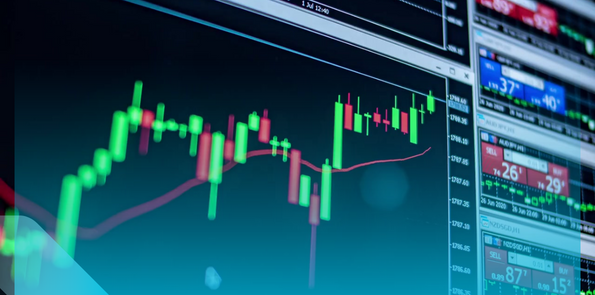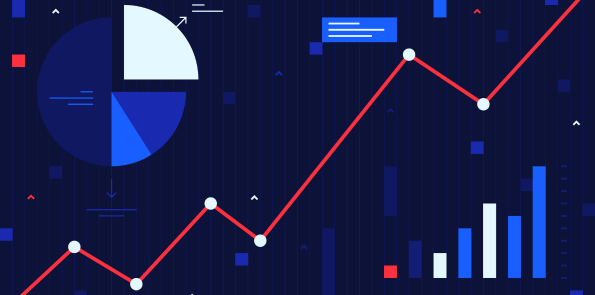Forex Trading 101: The Beginner's Guide to Currency Markets

Обзоры рынка
Forex Trading 101: The Beginner's Guide to Currency Markets
Introduction
Forex trading, also known as foreign exchange trading, is the process of buying and selling currencies to make a profit. It is the largest and most liquid financial market in the world, with trillions of dollars traded on a daily basis. Forex trading offers individuals, businesses, and financial institutions opportunities to speculate on the fluctuations in currency values and make profits.
Understanding Currency Markets
Before delving into forex trading, it is essential to understand the basics of currency markets. Currencies are traded in pairs, such as EUR/USD (euro versus US dollar) or GBP/JPY (British pound versus Japanese yen). The first currency in a pair is called the base currency, and the second currency is the quote currency.
The value of a currency pair represents how much of the quote currency is needed to buy one unit of the base currency. For example, if the EUR/USD pair has an exchange rate of 1.20, it means that 1 euro is equivalent to 1.20 US dollars. Currency values fluctuate based on various factors such as economic indicators, geopolitical events, and central bank policies.
Opening a Forex Trading Account
To start trading forex, you need to open an account with a regulated forex broker. A reputable broker provides online trading platforms that enable you to execute trades, analyze charts, and manage your account. When choosing a broker, consider factors such as regulation, trading costs, customer support, and available trading tools.
After selecting a broker, you will need to complete the account registration process. This typically includes providing personal identification documents and agreeing to the broker's terms and conditions. Once your account is approved, you can deposit funds and begin trading.
Understanding Forex Quotes and Spreads
Forex quotes consist of two prices: the bid price and the ask price. The bid price is the price at which you can sell the base currency, while the ask price is the price at which you can buy the base currency. The difference between the bid and ask price is known as the spread, and it represents the broker's profit.
For example, if the EUR/USD pair has a bid price of 1.2000 and an ask price of 1.2003, the spread is 0.0003. This means that if you want to buy one euro, it would cost you 1.2003 US dollars. However, if you want to sell one euro, you would receive 1.2000 US dollars.
Types of Forex Orders
There are different types of orders you can use when trading forex:
1. Market Order
A market order is an order to buy or sell a currency pair at the current market price. It is executed instantly at the best available price.
2. Limit Order
A limit order allows you to set a specific price at which you want to buy or sell a currency pair. The order is executed only if the market reaches your specified price.
3. Stop-Loss Order
A stop-loss order is used to limit potential losses. It automatically closes your position when the market reaches a specified price, helping you minimize losses if the trade goes against you.
4. Take-Profit Order
A take-profit order is used to lock in profits. It automatically closes your position when the market reaches a specified price, allowing you to secure your gains.
Managing Risk in Forex Trading
Risk management is a crucial aspect of successful forex trading. Here are some risk management strategies to consider:
1. Set Stop-Loss Orders
Always set stop-loss orders to limit potential losses. Determine a level at which you are willing to exit a trade if it goes against you, and set a stop-loss order accordingly.
2. Use Proper Position Sizing
Calculate the appropriate position size based on your risk tolerance and the distance between your entry point and stop-loss level. Avoid risking too much of your account balance on a single trade.
3. Diversify Your Trades
Do not put all your eggs in one basket. Diversify your trades by trading different currency pairs and using different trading strategies. This helps spread the risk and reduces the impact of any single trade.
4. Keep Emotions in Check
Always trade based on logical analysis, not emotional reactions. Fear and greed can cloud judgment and lead to impulsive and irrational trading decisions.
Educate Yourself and Practice
Forex trading requires knowledge, skill, and practice. Take the time to educate yourself about forex trading concepts, strategies, and analysis techniques. Many online resources, courses, and books are available to help you enhance your trading skills.
Practice trading in a demo account before risking real money. Most brokers offer demo accounts that simulate real market conditions. This allows you to test your trading strategies and gain confidence before trading with real funds.
Conclusion
Forex trading can be a rewarding and lucrative endeavor if approached with the right knowledge and mindset. Understanding currency markets, using proper risk management strategies, and continuous education are essential to succeed in this dynamic market. Start your forex trading journey by opening an account with a reputable broker and remember to practice before trading with real money. With dedication and persistence, you can navigate the currency markets and potentially profit from this exciting financial market.


